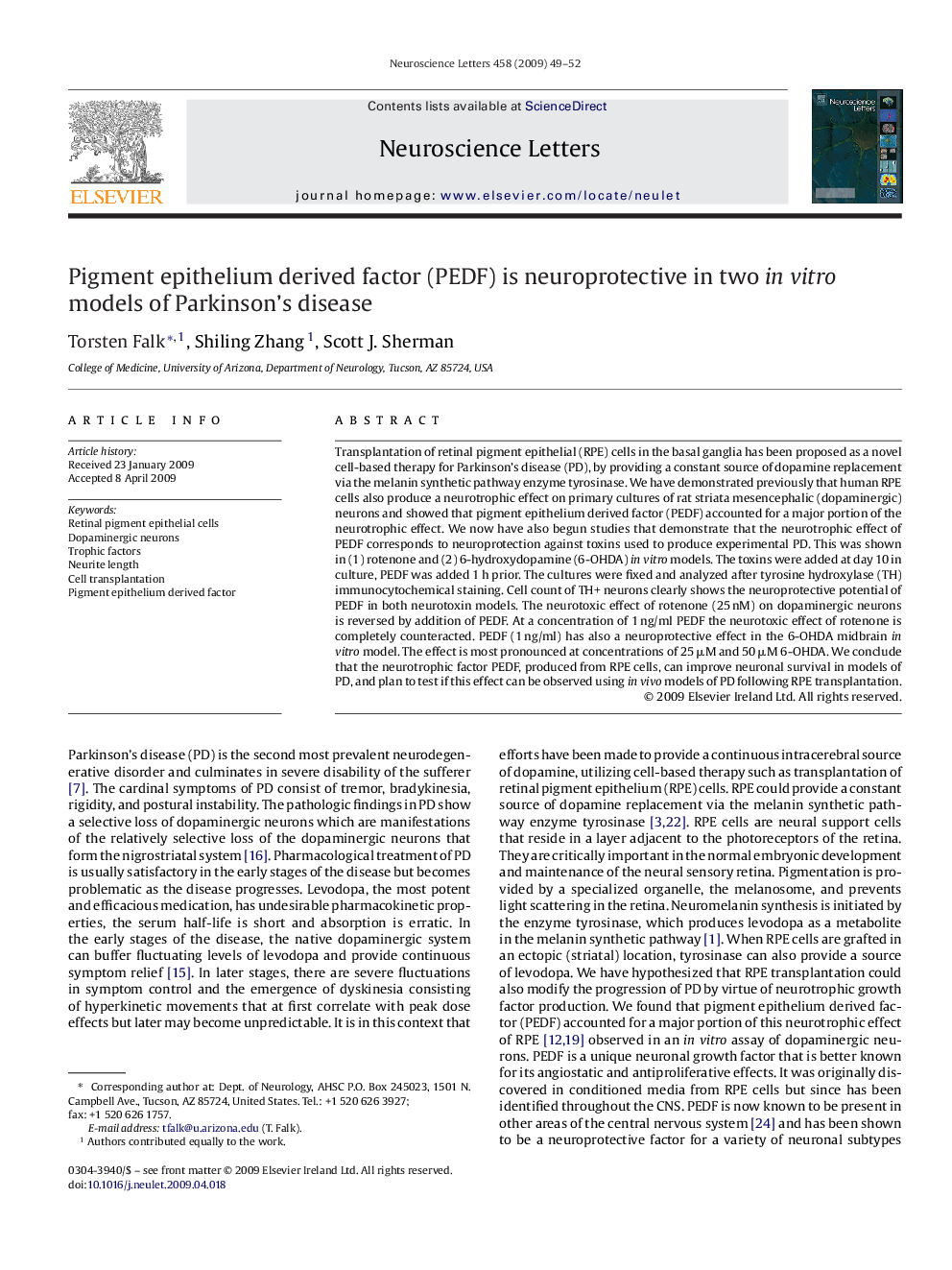| Article ID | Journal | Published Year | Pages | File Type |
|---|---|---|---|---|
| 4347040 | Neuroscience Letters | 2009 | 4 Pages |
Abstract
Transplantation of retinal pigment epithelial (RPE) cells in the basal ganglia has been proposed as a novel cell-based therapy for Parkinson's disease (PD), by providing a constant source of dopamine replacement via the melanin synthetic pathway enzyme tyrosinase. We have demonstrated previously that human RPE cells also produce a neurotrophic effect on primary cultures of rat striata mesencephalic (dopaminergic) neurons and showed that pigment epithelium derived factor (PEDF) accounted for a major portion of the neurotrophic effect. We now have also begun studies that demonstrate that the neurotrophic effect of PEDF corresponds to neuroprotection against toxins used to produce experimental PD. This was shown in (1) rotenone and (2) 6-hydroxydopamine (6-OHDA) in vitro models. The toxins were added at day 10 in culture, PEDF was added 1 h prior. The cultures were fixed and analyzed after tyrosine hydroxylase (TH) immunocytochemical staining. Cell count of TH+ neurons clearly shows the neuroprotective potential of PEDF in both neurotoxin models. The neurotoxic effect of rotenone (25 nM) on dopaminergic neurons is reversed by addition of PEDF. At a concentration of 1 ng/ml PEDF the neurotoxic effect of rotenone is completely counteracted. PEDF (1 ng/ml) has also a neuroprotective effect in the 6-OHDA midbrain in vitro model. The effect is most pronounced at concentrations of 25 μM and 50 μM 6-OHDA. We conclude that the neurotrophic factor PEDF, produced from RPE cells, can improve neuronal survival in models of PD, and plan to test if this effect can be observed using in vivo models of PD following RPE transplantation.
Keywords
Related Topics
Life Sciences
Neuroscience
Neuroscience (General)
Authors
Torsten Falk, Shiling Zhang, Scott J. Sherman,
